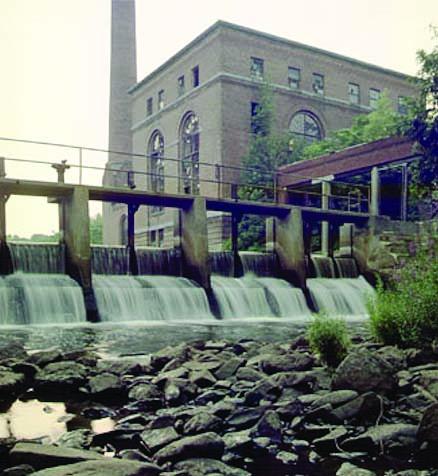October 27, 2022

The Walter Baker Dam in Lower Mills.
Courtesy Neponset River Watershed Association
In the wake of the Environmental Protection Agency’s determination last March that the 3.7-mile section of the Lower Neponset River, from the Walter Baker Dam in Lower Mills to the “Mother Brook Confluence” by Hyde Park Avenue, is a “Superfund” site, federal regulators plan a series of workshops in November that will focus on upcoming cleanup operations.
Giving a site “Superfund” status is shorthand for the federal program for eliminating chemical contamination like polychlorinated biphenyls (PCBs), which are harmful man-made chemicals manufactured and used in industrial and commercial ways between 1929 and 1979, when they were banned. The Lower Neponset region was once home to a number of industrial companies and mills.
The EPA says the workshops will offer a chance for residents to meet the team behind the cleanup and share their concerns.
The sessions will take place in Mattapan, Hyde Park, and Milton, with all of them starting at 6:15 p.m.. The Mattapan workshop, which will be held in-person, is scheduled for Tues., Nov. 15, inside the Mildred Avenue K-8 School. The Hyde Park meeting, also in-person, is set for Thurs., Nov. 17, at the BCYF Hyde Park Community Center on River Street. The Milton session will be both in-person and virtual on Thurs., Nov. 10, inside the Milton Council on Aging at 10 Walnut St.
Due to the presence of chemicals in the water, and in the Neponset’s fish, the Massachusetts Department of Health has warned against eating fish caught in the river, especially children under 12, pregnant women, nursing mothers, and women who could become pregnant.
Officials say the Lower Neponset River, which spans between 40 feet to 300 feet en route to the harbor and covers 40 acres, is still safe to use for walking, biking, boating, rowing, kayaking, and parks and playgrounds. They recommend against swimming or wading into the river, because people could come in contact with the soil and mud at the bottom of the river, which has high chemical levels.
The cleanup will be paid for through the $3.5 billion in funding of the infrastructure law signed by President Biden last year. The price tag, and the timeline to completion, are unclear at this point.


